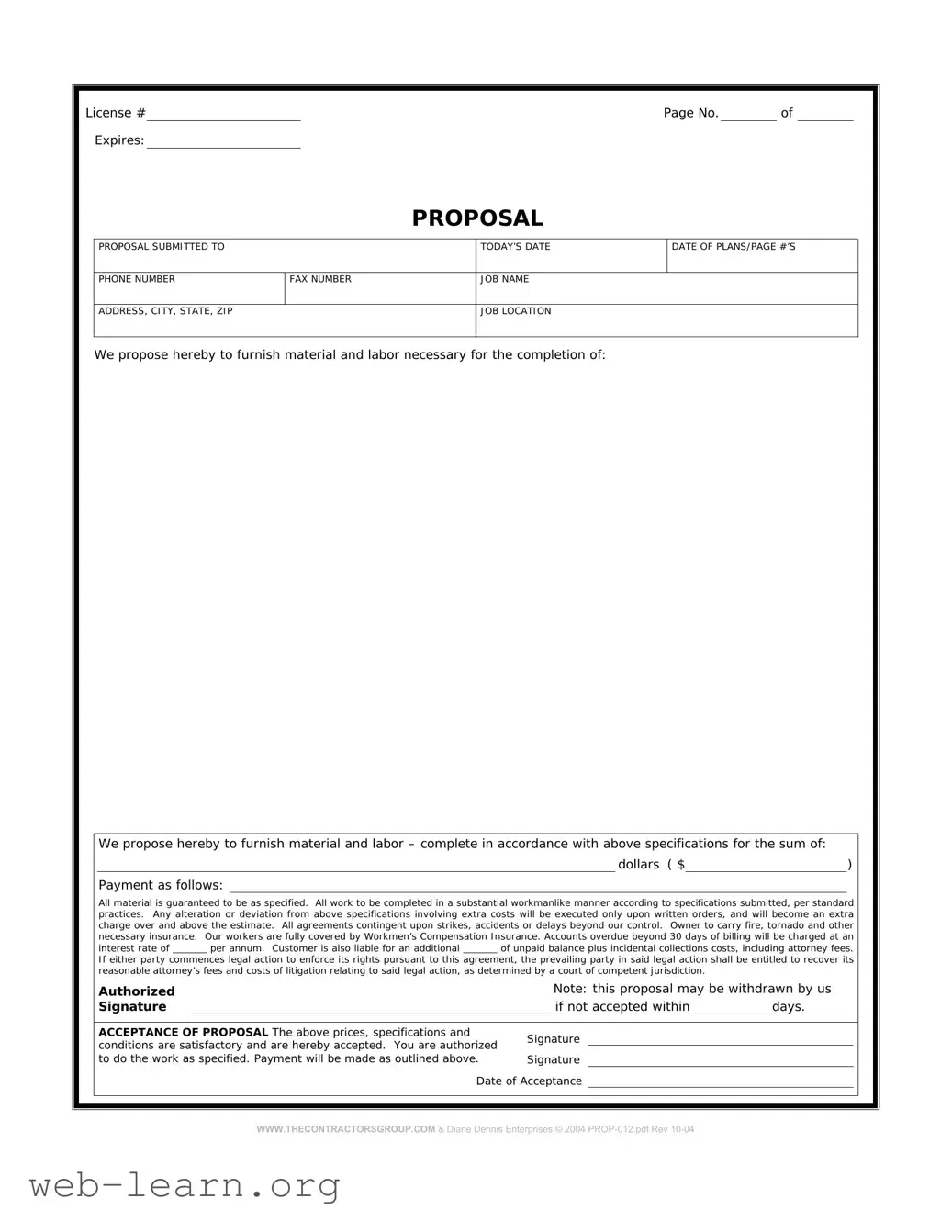Completing a construction proposal form is a vital step in securing contracts and projects. However, many individuals make common mistakes that can jeopardize their chances of success. The first mistake often seen is not providing complete contact information. This can lead to miscommunication and potential delays in project initiation. Clear and accurate contact details ensure that clients can easily reach out for follow-ups.
Another frequent error involves failing to itemize costs adequately. The proposal should include detailed breakdowns for labor, materials, and other expenses. Omitting these specifics may give the impression of hidden costs, which could deter clients from moving forward. Transparency in pricing builds trust and credibility.
Additionally, many people neglect to specify project timelines. A proposal should outline not only the start date but also estimated completion dates. Without this information, clients may feel uncertain about the project's progress and duration, potentially leading to frustration or withdrawal.
Submission deadlines often cause confusion. Missing a deadline for the proposal can disqualify a contractor from consideration. Staying informed about due dates is critical, as it demonstrates professionalism and reliability. Applicants should always double-check their submission dates.
Another common oversight is failing to include relevant qualifications and experience. Clients want to know who they are working with. A proposal lacking this information might not stand out in a competitive bidding process. It’s essential to showcase any licenses, certifications, or past work that showcases expertise in the field.
Lastly, not tailoring the proposal to the client's needs can be a significant misstep. Each project comes with unique requirements, and a generic proposal may seem indifferent to the client's specific goals. Taking time to customize each submission shows diligence and a genuine interest in meeting the client's expectations.

